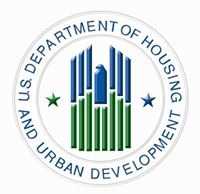WASHINGTON – RealEstateRama – The U.S. Department of Housing and Urban Development (HUD) announced $25 million in Housing Mobility-Related Services awards to 7 Public Housing Agencies (PHAs) across the country. These funds are designed to expand housing choices for Housing Choice Voucher (HCV) families with children by increasing access to opportunity neighborhoods with high-performing schools, access to jobs, low crime rates, parks, and other amenities.
“Every parent knows the value of providing a safe and secure place for their child to call home. Stability at home helps promote their future success – in school and onwards,” said Secretary Marcia L. Fudge. “As HUD works to expand affordable housing and ensure economic mobility is possible for all families, these Housing Mobility-Related Services awards will boost access to housing vouchers for families who need them the most.”
The funds for housing mobility-related services, as outlined in the Notice of Funding Opportunity (NOFO), will enable additional PHAs to administer housing mobility programs. This, in turn, will raise the number of HCV families with children living in neighborhoods characterized by low poverty levels.
Richard J. Monocchio, Principal Deputy Assistant Secretary for Public and Indian Housing, made the announcement alongside recipient, Housing Authority of Milwaukee County, in Milwaukee County, Wisconsin. Please see the list of awardees here.
“The impact of these funds is tangible – families can more easily move to neighborhoods of their choice and near more opportunity,” said Principal Deputy Assistant Secretary for Public and Indian Housing, Richard J. Monocchio. “Providing families additional support with their housing search can ultimately lead to better long-term outcomes in employment and education.”
This program is based on HUD’s Community Choice Demonstration program that builds upon recent research that shows growing up in neighborhoods with lower poverty levels improves children’s academic achievement and long-term chances of success and reduces intergenerational poverty. Children who move to low-poverty neighborhoods have also been shown to experience lower rates of hospitalizations, lower hospital spending, and some changes in mental health over the long-term follow-up. Adults given the chance to move to low-poverty neighborhoods experience reductions in obesity and diabetes.
While the HCV program currently offers families with vouchers the opportunity to live in a neighborhood of their choice (including low-poverty, opportunity neighborhoods), families with HCVs may continue to encounter barriers to using their vouchers in communities with expanded opportunities. Common barriers include the inability to save enough money for a security deposit, inadequate time to find a unit, landlord unwillingness to rent to voucher holders, or limited awareness of neighborhood amenities, such as the location of high-performing schools.
The Housing Choice Voucher Mobility Services Program will support PHAs in addressing barriers to accessing housing choices by offering mobility-related services to increase the number of voucher families with children living in opportunity areas. In addition to offering mobility-related services, PHAs will work together in their regions to adopt administrative policies that further enable housing mobility, increase landlord participation, and reduce barriers for families to move across PHA jurisdictions through portability.
###
HUD’s mission is to create strong, sustainable, inclusive communities and quality affordable homes for all.
More information about HUD and its programs is available at www.hud.gov and https://espanol.hud.gov.
You can also connect with HUD on social media and follow Secretary Fudge on Twitter and Facebook or sign up for news alerts on HUD’s Email List.
HUD COVID-19 Resources and Fact Sheets
Learn More About HUD’s Property Appraisal and Valuation Equity Work
HUD Public Affairs
(202) 708-0685









